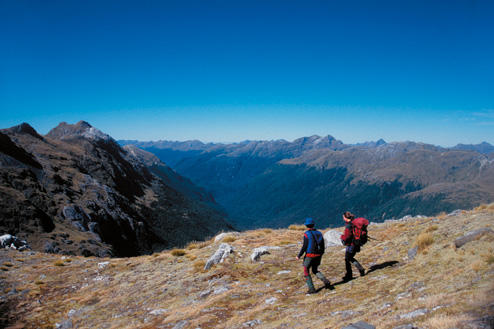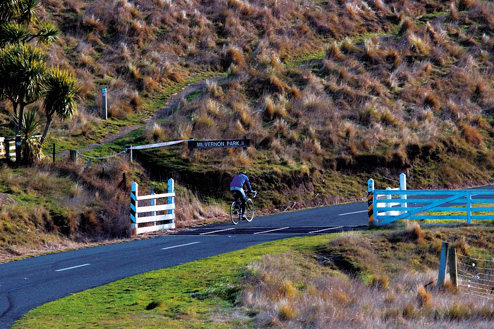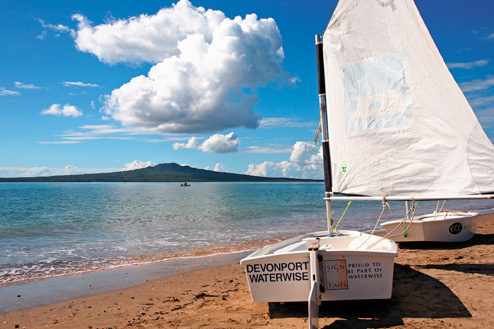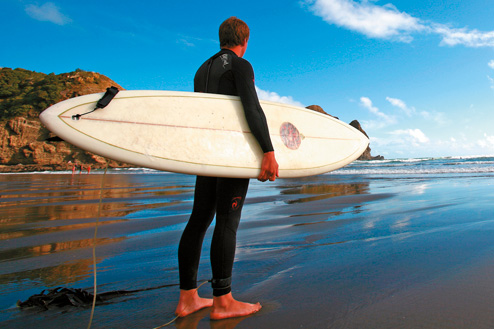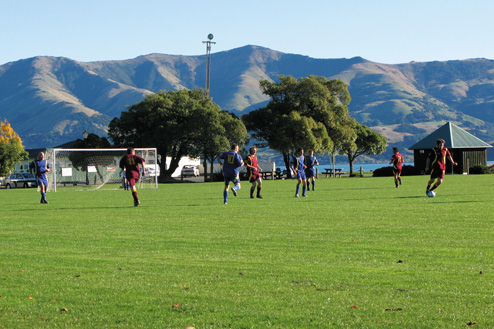Hiking
In New Zealand, hiking, rambling and bushwalking are called tramping. After you’ve spent a few hours slogging it out over some hilly terrain, the name will seem entirely appropriate. From well-maintained short trails along the coast and one-day mountain challenges to gruelling multi-day hikes through remote backcountry, you’ll find an option for you.
Many tramping tracks are in national or regional parks and reserves, although there are some well-known private walks such as the Tora Coastal Walk near Wellington (www.toracoastalwalk.co.nz, 06 307 8862) and the Kaikoura Coast Track north of Christchurch (www.kaikouratrack.co.nz, 03 319 2715).
The Department of Conservation (www.doc.govt.nz) manages hundreds of tracks and walks throughout the country, including nine Great Walks, which are considered the premier walking tracks. These traverse some of the country’s best scenery, and the huts and tracks are of a higher standard than others you might come across. DoC huts are basic but adequate and all have different facilities, so check what’s available before you set out. Fees are payable.
Safety should be foremost in your mind when you are preparing for a tramp, even if you are only going for a relatively short time or distance. It’s easy to become disorientated in New Zealand’s thick bush and climatic conditions can change rapidly. Always tell someone where you are going and when you expect to be back and you should sign in and out of the intentions book if one is provided.
There’s an excellent network of tramping, alpine and mountain clubs throughout the country. Membership is inexpensive and all clubs provide a chance to join tramping trips and social events, while some also offer instruction courses, equipment hire and their own huts and lodges. Over 100 clubs are affiliated to the national organisation, the Federated Mountain Clubs of New Zealand (www.fmc.org.nz, email secretary@fmc.org.nz). Club contacts are listed on the website, with most offering a range of membership options and charges.
Many tramping tracks are in national or regional parks and reserves, although there are some well-known private walks such as the Tora Coastal Walk near Wellington (www.toracoastalwalk.co.nz, 06 307 8862) and the Kaikoura Coast Track north of Christchurch (www.kaikouratrack.co.nz, 03 319 2715).
The Department of Conservation (www.doc.govt.nz) manages hundreds of tracks and walks throughout the country, including nine Great Walks, which are considered the premier walking tracks. These traverse some of the country’s best scenery, and the huts and tracks are of a higher standard than others you might come across. DoC huts are basic but adequate and all have different facilities, so check what’s available before you set out. Fees are payable.
Safety should be foremost in your mind when you are preparing for a tramp, even if you are only going for a relatively short time or distance. It’s easy to become disorientated in New Zealand’s thick bush and climatic conditions can change rapidly. Always tell someone where you are going and when you expect to be back and you should sign in and out of the intentions book if one is provided.
There’s an excellent network of tramping, alpine and mountain clubs throughout the country. Membership is inexpensive and all clubs provide a chance to join tramping trips and social events, while some also offer instruction courses, equipment hire and their own huts and lodges. Over 100 clubs are affiliated to the national organisation, the Federated Mountain Clubs of New Zealand (www.fmc.org.nz, email secretary@fmc.org.nz). Club contacts are listed on the website, with most offering a range of membership options and charges.

